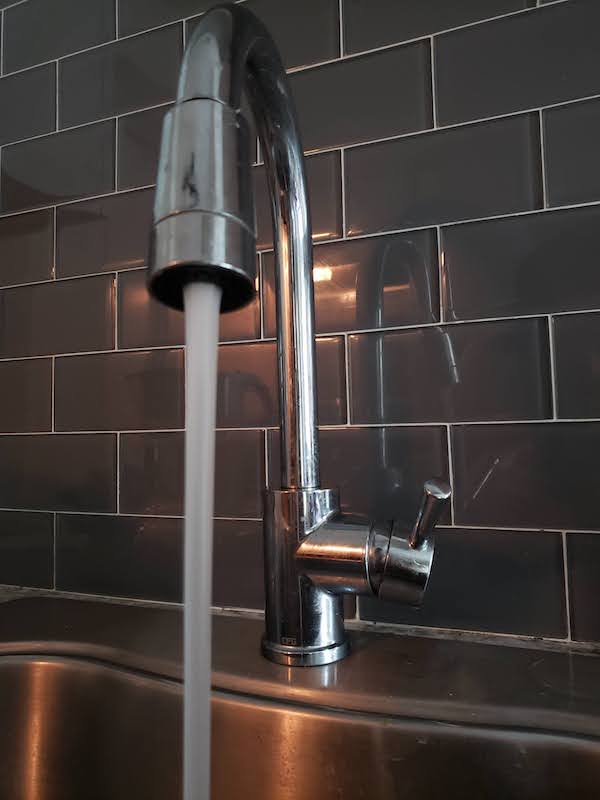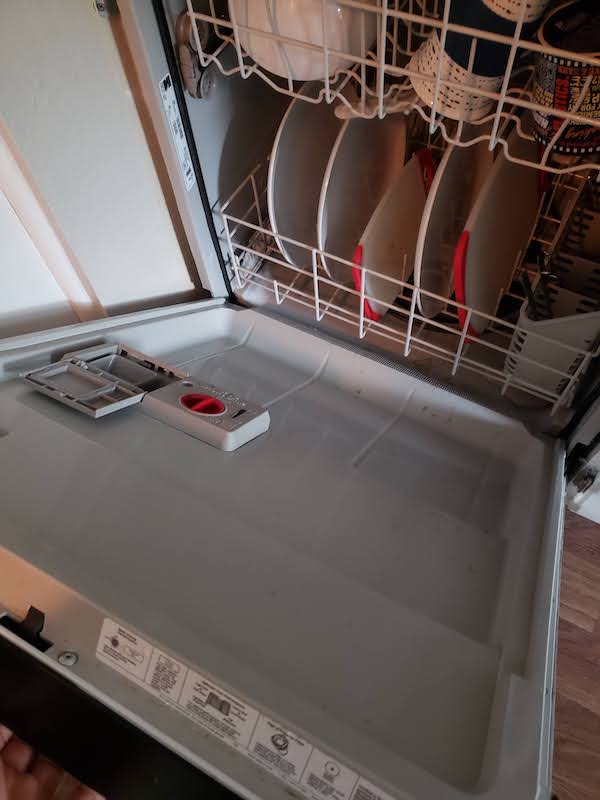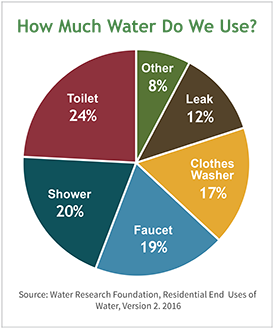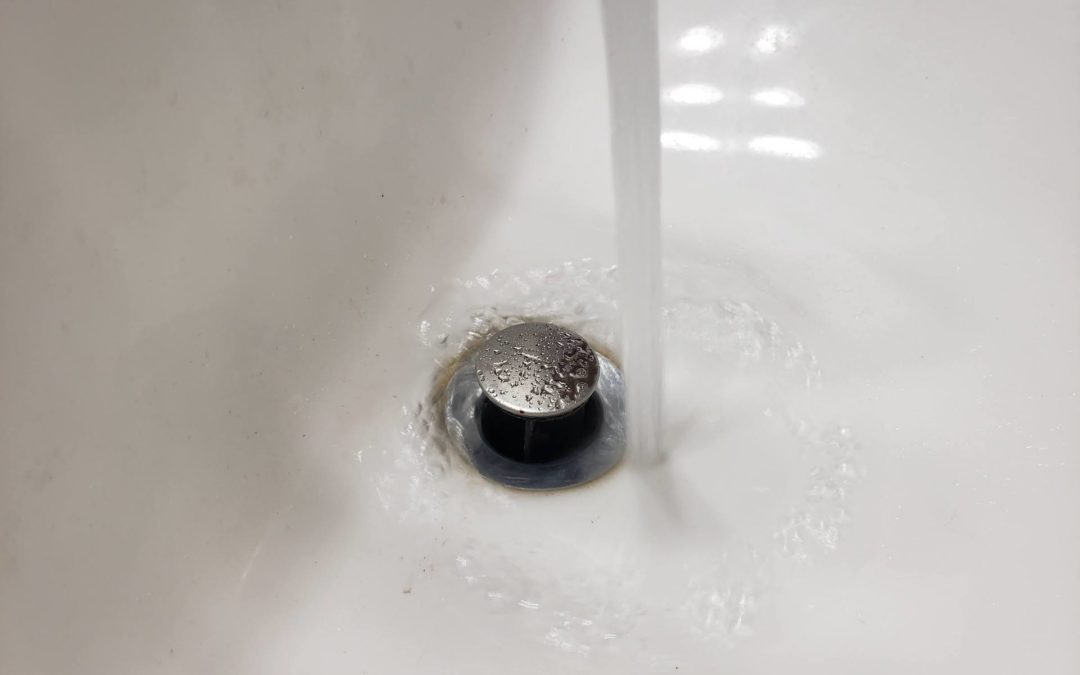One of the most overlooked parts of our everyday lives is the accessibility to clean, potable water. From our sinks to our refrigerators, showers, drinking fountains, and the dishwashers at our favorite local restaurant, families and businesses alike are blessed with the power of water by simply turning on a faucet. With all the water problems that have come up recently in the U.S. and around the world generally, as well as here in Michigan more specifically, practicing responsible water use is critical.
According to the Environment Protection Agency (EPA), the average family uses 300 gallons of water a day. There are many ways to reduce water usage, and while having the newest appliances with the best efficiency can definitely help, the problem is much larger than that. So, how do you save money in and around the house? We’re glad you asked! The best way to save water (and money) is to start following these simple Household Water Saving Tips today!

1. Turn off Faucets
This might seem like a no brainer on how to save water, but small habits like turning off the faucet while you are brushing your teeth are a big deal. If you brush at least once a day, and hopefully you do, this simple tip can save you hundreds of gallons of water over a year. Another scenario where we could all probably be more efficient is washing dishes. For those that do not have a dishwasher, use one side of the sink for washing and scrubbing per usual, but don’t rinse until every last dish (or as many as possible) is ready! Wham, bam, thank you ma’am.
2. Fix Leaks
One of the most common areas where we waste water around the house are via drips and leaks. Leaks can be gradual or not so gradual (if you have a leak contact a Premier Plumber ASAP), but the bottom line is that leaks are especially unfortunate as that water is not serving a positive purpose. Most of the time leaks can be fixed in a matter of minutes.
3. Use Every Drop
An easy way to practice maximizing your water for everyday use is in food prep and working in the kitchen. For example, when rinsing fresh produce (always eat your fruits and veggies, kids) have collection pan ready to capture the water below. While you may not be excited to drink this water as a post-food prep reward, you can use it to feed a garden or the plants around your house. Fresh food and air at home anybody!? This tip is also useful when you are waiting for running water in the sink or shower to turn warm.
4. Consider your appliances

First, look to see if your appliances are matching your needs. If you are only doing small loads of laundry and have a laundromat-sized machine you might consider downsizing to a smaller, more efficient washer. Another tip for saving water when washing clothes or dishes is, when looking at machines, opt for only those that are Energy Star certified.
Pro Tip to maximize water savings: Buy a front-loading washer (and dryer for electricity)
5. Re-examine your bathroom

How Much Water Do We Use? via United States EPA
When looking for the best water saving tips, one of the first places you should look is your bathroom. This becomes clear when looking at the pie graph above. Who knew the top three household items that use the most water were all in the same place!? Those three items include your toilet, shower, and bathroom sink.
First, let’s tackle the toilet. Depending on the age of the toilet, it can use up to 1.6 gallons of water per flush. If you are considering a new toilet or looking at a new commode at the store or online make sure it has the WaterSense label. WaterSense standards can save more than 4 gallons each per day, as they use only 1.28 gallons per flush.
Next, is that shower, or shower head more specifically. Legacy shower head models can blast more than 2.5 gallons per minute. If you’re taking a 10 minute shower, that’s 25 gallons a pop. Think about that for a minute. Can you imagine using 25 individual plastic gallon jugs just to take one shower? Pretty crazy, right? As mentioned above, if you’re in the market for a new shower head, or if your current shower head is great and you just want to start reducing your water waste, keep an eye out for that WaterSense label.
Lastly, in terms of water saving tips for your bathroom, there’s the bathroom faucet. While we spoke at length about the faucet in the first section of the article, it’s worth restating here that you should turn off the water when you’re brushing your teeth. Even if it’s only at a trickle, this is still 100% waste.
Pro Tips to maximizing water savings: Get a dual-flush toilet and time your showers to shorten them
6. Explore your outside water habits
Sure, we’ve considered sinks and showers, but what about beyond the walls of your home and around the yard? During the summer months, there are few things more enjoyable than sitting poolside, grilling, and chilling with friends and family. If you or someone you know is lucky enough to have a pool, one of the most substantial household water saving tips is to cover your pool. Covering your pool means less evaporation, which means less refilling of your gigantic outdoor tub (AKA pool) over and over again!
Next outside water habit to consider is how you water your plants or garden. If you have a small garden that is watered by an automatic irrigation system, it may actually better to hand water as you can do so with minimal water going anywhere it is not needed. Also, if you are outside watering you may get hot and then you can jump into your pool that you just learned on how to save water on.
PLUMBING TIPS FOR WARM WEATHER: Try these 5 Summer Plumbing Tips That Will Save You Money
Lastly, this outside water tip goes back to number 3 on our list, which is collecting water for watering in and around the house. Whereas inside you will be collecting faucet water in a pan, outside you will be collecting rain water in a drum. Available for purchase at a lawn and garden center near you, place a 55 gallon drum under your gutter’s downspout to collect the most water possible on those rainy days.
Conclusion
Practicing these water savings tips could be something that would be a late New Year’s Resolution or with Lent coming up practice for those 40 days. Even if you only use one or a couple of these tips, any small action over an extended period can lead to impactful savings. What do you think? Can you manage? Water saving tips are not the be-all-end-all, but if you think about it in terms of economics these tips can definitely help you to keep the cash flowing back into your wallet. (Pun intended)

